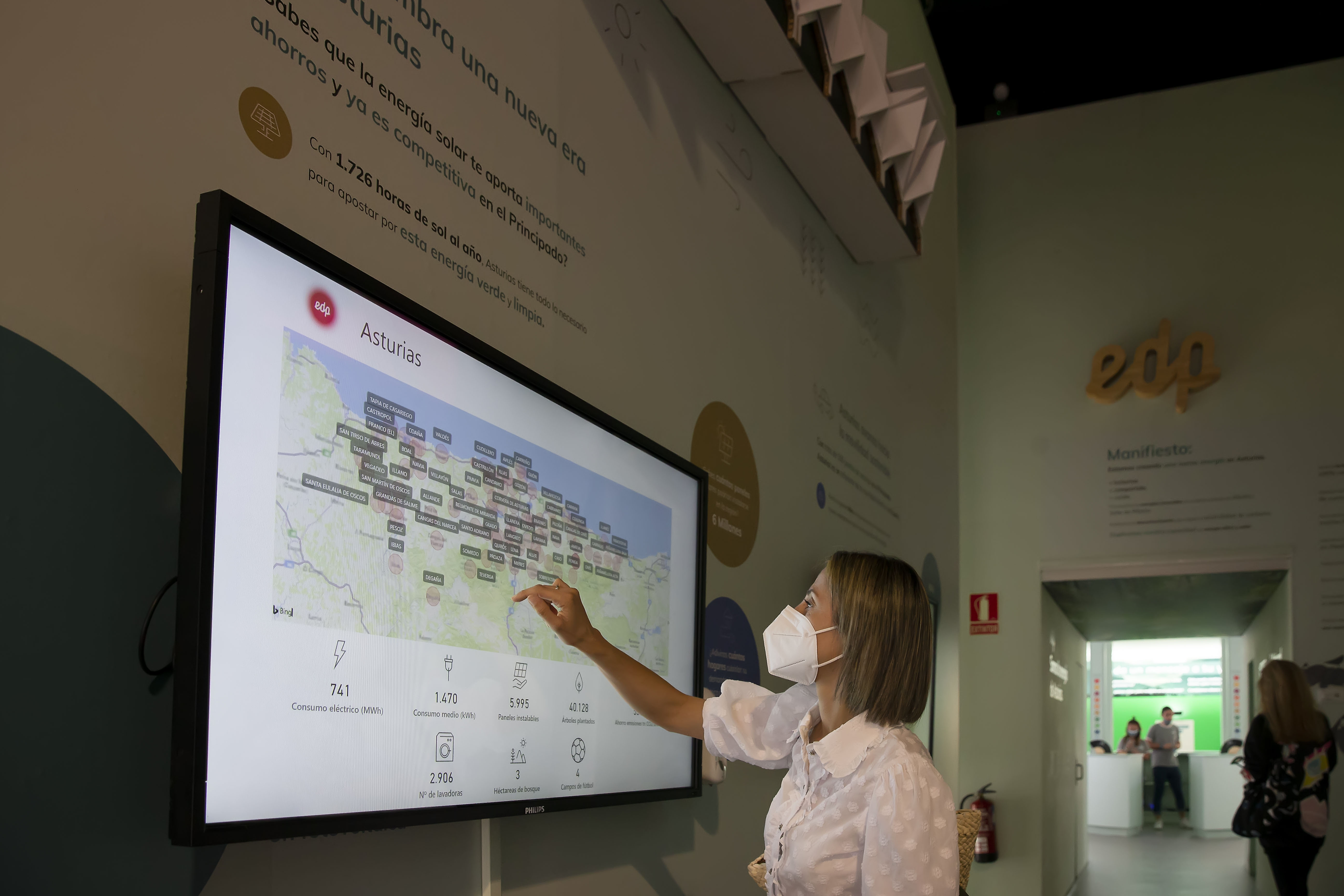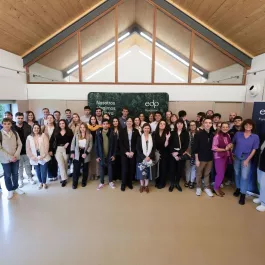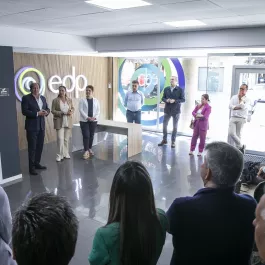
78% of Asturias’ buildings could install solar panels and cover more than 80% of the electric demand

With a space denominated “The sun shines on a new era in Asturias”, EDP’s pavilion in Gijón’s International Trade Fair (FIDMA) dedicates an area to talk about energy self-consumption in the region, the strategic priority of the company in its commitment with sustainability.
Asturias has around 1 726 sun hours per year, which means an opportunity to engage with energy saving, efficiency and sustainability with the photovoltaic facilities for self-consumption. This fact and other important curiosities about the region’s solar potential can be learned in EDP’s pavilion in the FIDMA, where apart from getting to know the company’s ambitious plans for Asturias’ future, there is a space dedicated to self-consumption. In it, visitants can consult a map of the region and calculate, among other things, the municipality’s photovoltaic generation ability or the number of trees that could be planted thanks to the positive impact in the environment that entails engaging with solar energy.
These are some of the data gathered in the study made by EDP, that aims to promote self-consumption in the regions’ households and businesses, with different integral solutions that ensure energy savings from day one.
- Out of the more than 240 000 buildings in the community, 78.45% have enough useful area to carry out photovoltaic installations. On the other hand, in the Principality there are more than 160 000 single-family homes, out of which 80% can also install solar panels to boost their energy saving through self-consumption.
- If solar panels were installed in all those households, the energy saving would cover the yearly average consumption of around 350 000 households, which would mean more than 80% if the electricity demand. The photovoltaic generation of these panels would allow to use more than 9.5 million washing machines per year without any cost for the owner of the installations.
- Self-consumption through photovoltaic installations also reinforces the environment’s protection. The energy generated from the sun is 100% renewable, and therefore, with that production of electric energy, the emission of around 500 tons of CO2 would be avoid in Asturias. The positive impact in the air quality would equal to planting more than 37 million new trees, in other words, 2 660 hectares of forest or 3 725 football field.
- Gijón is the municipality that has a greater potential for the photovoltaic generation (557 MWh), followed by Oviedo (466 MWh), Avilés (155 MWh), Siero (116 MWh) and Langreo (97 MWh).
The installation of solar panels for Spain’s self-consumption has one more incentive, the direct award to all autonomic communities of subsidies for the execution of several incentive programs linked to self-consumption. The aid programs will be in force until December 31, 2023, and are endowed with a combined initial amount of EUR 660 million euros, distributed among the different autonomic communities and the cities Ceuta and Melilla, that will be financed with the funds from the Wellness, Recovery, and Resilience Focused Plan. Furthermore, these aids will be expandable until they reach the 900 million euros aimed to self-consumption.
In addition, the citizens of some Asturian municipalities have an additional incentive, with a discount on the Real Estate Tax (IBI) for the start-up of photovoltaic installations. That, added to the savings generated by the installation itself, means that the installation of solar panels could be very economic. Avilés credits a 50% for 3 years, Carreño and Oviedo a 50% for 5 years; Gijón credits a 40% for 5 years; Tineo a 25% for 5 years; Llanera a 20% for 3 years and Cabrales a 10%.
In this autonomic community, each family that lives in a single-family house and decides to install solar panels to produce their own electric energy, will not only benefit from the savings from self-consumption, but also from the compensation for energy surplus, that is, the electricity that is not consumed but put onto the network.

